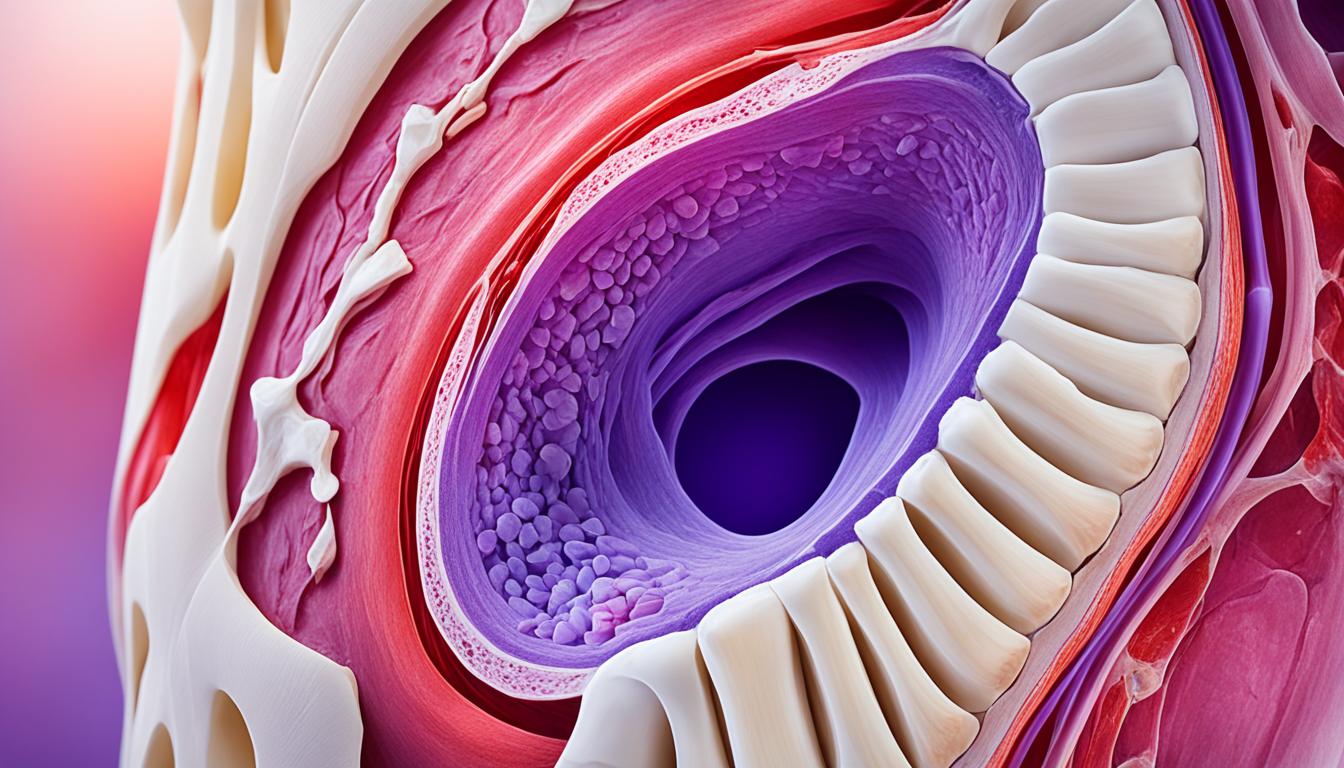Meniscus tears happen often and are usually caused by a forceful twist or rotation of the knee. This can happen during activities like sudden stops, turns, or aggressive pivoting. It can also result from kneeling, deep squatting, or heavy lifting. Even older adults can get a torn meniscus because knees weaken over time. The knee is supported by two menisci, one on the inside and one on the outside, shaped like a C. These help spread force across the knee, keep the joint stable, and absorb impact when walking. They also make the knee move smoothly.
Key Takeaways:
- Meniscus tears are a common knee injury caused by activities that forcefully twist or rotate the knee.
- The tears can result from sudden stops and turns, aggressive pivoting, kneeling, deep squatting, or heavy lifting.
- Older adults may also experience a torn meniscus due to knee degeneration over time.
- The knee has two menisci, which play a crucial role in joint stability and force transmission.
- Meniscus tears are often associated with ACL injuries and can be diagnosed through a clinical evaluation or diagnostic imaging.
The image is placed in the center to make it look good and match the topic.
Causes and Diagnosis of Meniscus Tears
Meniscus tears come from different reasons. These include sudden injuries and the knee changing over time.
Causes of Meniscus Tears
Activities that forcefully twist or rotate the knee can cause tears. Things like sudden stops, deep squatting, and heavy lifting can harm the meniscus.
If the knee is weak or has damaged cartilage, tears are more likely.
Wear and tear can also lead to tears, especially in older adults. This happens as the knee joint grows weaker, making the menisci more fragile.
Meniscus tears often happen with ACL injuries. The ACL keeps the knee stable. When it tears, the risk of meniscus tears rises.
Other knee ligaments, like the MCL or PCL, can be hurt along with meniscus tears.
Diagnosis of Meniscus Tears
Diagnosis involves both assessment and imaging tests.
Healthcare providers review your medical history and check your symptoms. They also do a physical exam of your knee to feel for tenderness, look for swelling, and test how well it moves.
They watch for specific signs, like joint pain or sounds when you move your knee.
While the exam helps, imaging tests are often needed. MRI scans show detailed pictures inside the knee. This helps doctors find tears and other problems.
X-rays are used to rule out issues like bone fractures. They don’t directly show the meniscus. But they can check for other knee problems.
Ultrasound also creates images of the knee. It’s real time and can be done quickly, making it useful when an MRI isn’t immediate.
The best test depends on the patient’s condition and needs. Doctors pick the right one to clearly see what’s wrong.
Treatment Options for Meniscus Tears, Including Stem Cell Therapy
If you have a meniscus tear, treatment options include non-surgical and surgical methods. Non-surgical ways aim to ease symptoms and boost the knee’s own healing process. These can range from rest to physical therapy.
Conservative treatments try to lower inflammation, ease pain, and help the knee heal. If these don’t work, surgery may be needed. The surgery’s type depends on the tear’s size and place.
For some, partial meniscectomy, to remove the torn part, is done. In other cases, surgeons may choose to repair the meniscus, sewing it back together. This keeps the knee’s natural structure and function.
If the tear is big or too damaged, replacing the meniscus might be needed. Surgeons may use donated tissue or synthetic materials for this. It helps improve the knee’s stability and lowers the chance of joint problems later on.
Stem cell therapy is another option for meniscus tears. This treatment uses stem cells to help the knee heal by repairing damaged tissue. It’s an exciting area of treatment that could change how we handle meniscus tears.
Research and studies continue to look at how effective stem cell therapy is for meniscus tears. This approach could be a game-changer, offering a non-surgical option for patients. It may provide a new way to treat meniscus tears and help people heal without the need for surgery.

